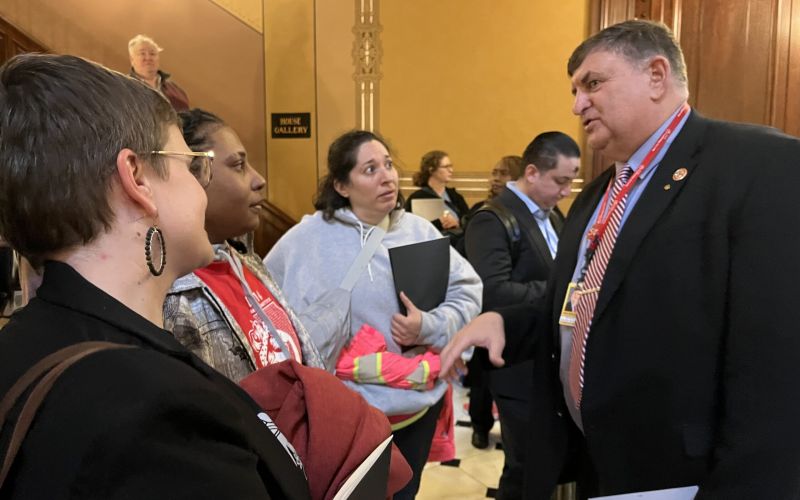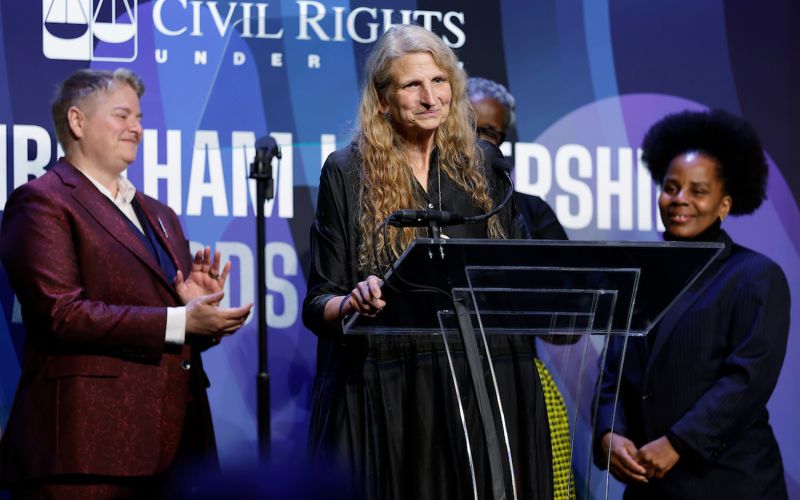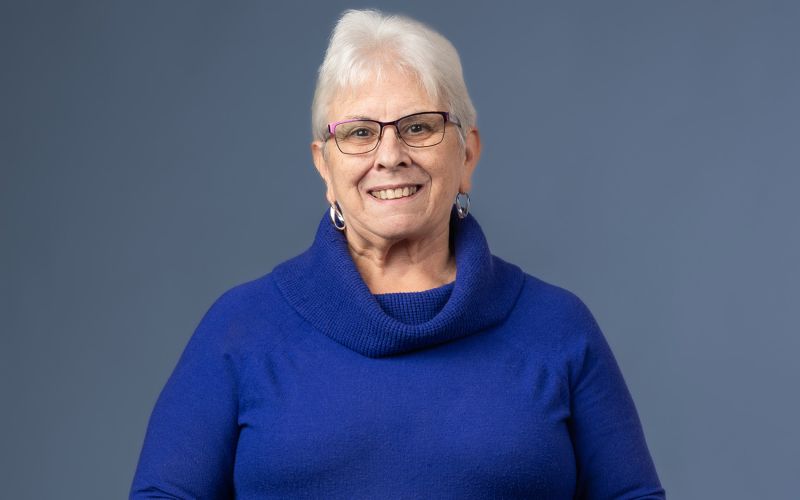July 31, 2025
Building Safety Through Experience: A Carpenter’s Transition Into Construction Safety
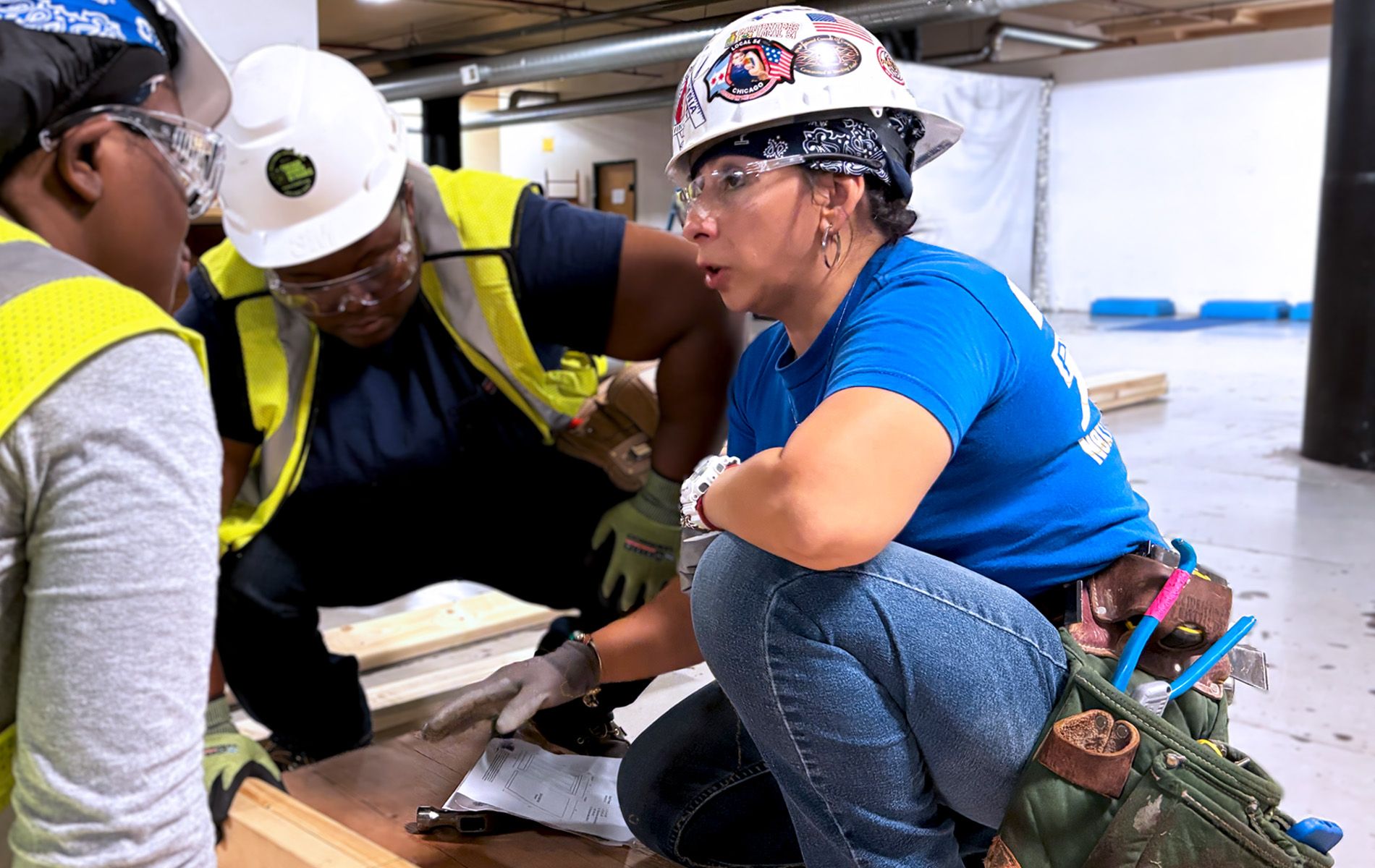
After 11 years working as a carpenter, Edith Guerrero is using her experience to prepare the next generation and advocate for safer workplaces for women
Eleven years ago, Edith Guerrero walked into Chicago Women in Trades (CWIT) as a student looking for a new direction. After graduating from the TOP program in 2014 and spending over a decade as a carpenter, she’s now transitioning into construction safety, bringing a unique perspective shaped by years of navigating job sites as a woman.
Q: What has your journey with Chicago Women in Trades been like?
“I went through the TOP program 12 years ago, graduating on May 1st. It’s funny because Google just showed me my graduation picture as a memory—happy anniversary to me! I had an instructor who was old school and very tough. You didn’t get a second chance with her, but I’m grateful because CWIT changed my life completely.
I graduated in May, took the apprenticeship test, and by September, I was already working as a carpenter. I’ve been in the field for 11 years now, but I think it’s time for me to retire my tools. Construction is hard on your body, and I’m getting older. I still want to stay in the construction industry, which is why I’m working in safety.
I always wanted to give back, and I have always been good at math. So after I graduated in 2014, I started as a tutor, helping the TOP classes. Eventually, I became an instructor myself, and I love it. Teaching feels like my passion now.”
Q: What real-world lessons from your job site experience do you share with students?
“I always tell them the truth—I never lie to them. It’s a hard profession, and you have to have thick skin. I tell them they may face discrimination. Hopefully not, but there could be sexual harassment, or people might not want women there simply because we’re women or minorities. I prepare them by sharing what I went through.
My journey wasn’t all great—I faced a lot of discrimination. I didn’t speak up at first, because I knew there would be repercussions, but when I finally did speak up, I felt prepared because I knew CWIT had my back. If it weren’t for CWIT, I don’t think I’d be where I am today in every aspect of my life.
I tell them to prepare for the worst, and if it doesn’t happen, that’s great. But at least they have the tools and knowledge—they know who to contact and how to navigate situations. I don’t want to lie and say the trades will always be amazing, because that’s not always the case.
But I loved the sense of pride and accomplishment that came with seeing a project come to life, especially working in concrete, where you literally build the foundation for everything else. It’s hard work, but there’s nothing like stepping back at the end of the day and seeing what your hands helped create. I also enjoyed proving to myself and others that women can thrive in this trade. The physical and mental challenge pushed me to grow, and I met some amazing people along the way.”
Q: Now that you’ve transitioned to safety, how can women stay safer on job sites, particularly when it comes to harassment and discrimination?
First, we need to build a culture where harassment and discrimination are not tolerated, period. That starts with proper training, strong leadership, and having the courage to speak up when something isn’t right. Women should know their rights and feel confident reporting issues without fear of retaliation.
We also need to ensure there are safe, clean facilities and proper PPE that fits women. As a safety professional now, I’m focused on being a voice for those who feel overlooked and making sure every worker, especially women, feels respected, protected, and supported on the job.
Creating allies is crucial. There are a lot of great men out there who are willing to help and teach you. Hold onto those mentors—I had a journeyman who took me under his wing and still texts me to make sure I’m okay. He really looked out for me.
I always tell these women that not all men are the same. A lot of them will advocate for you, so hold onto those people because there are men who really take care of you.”
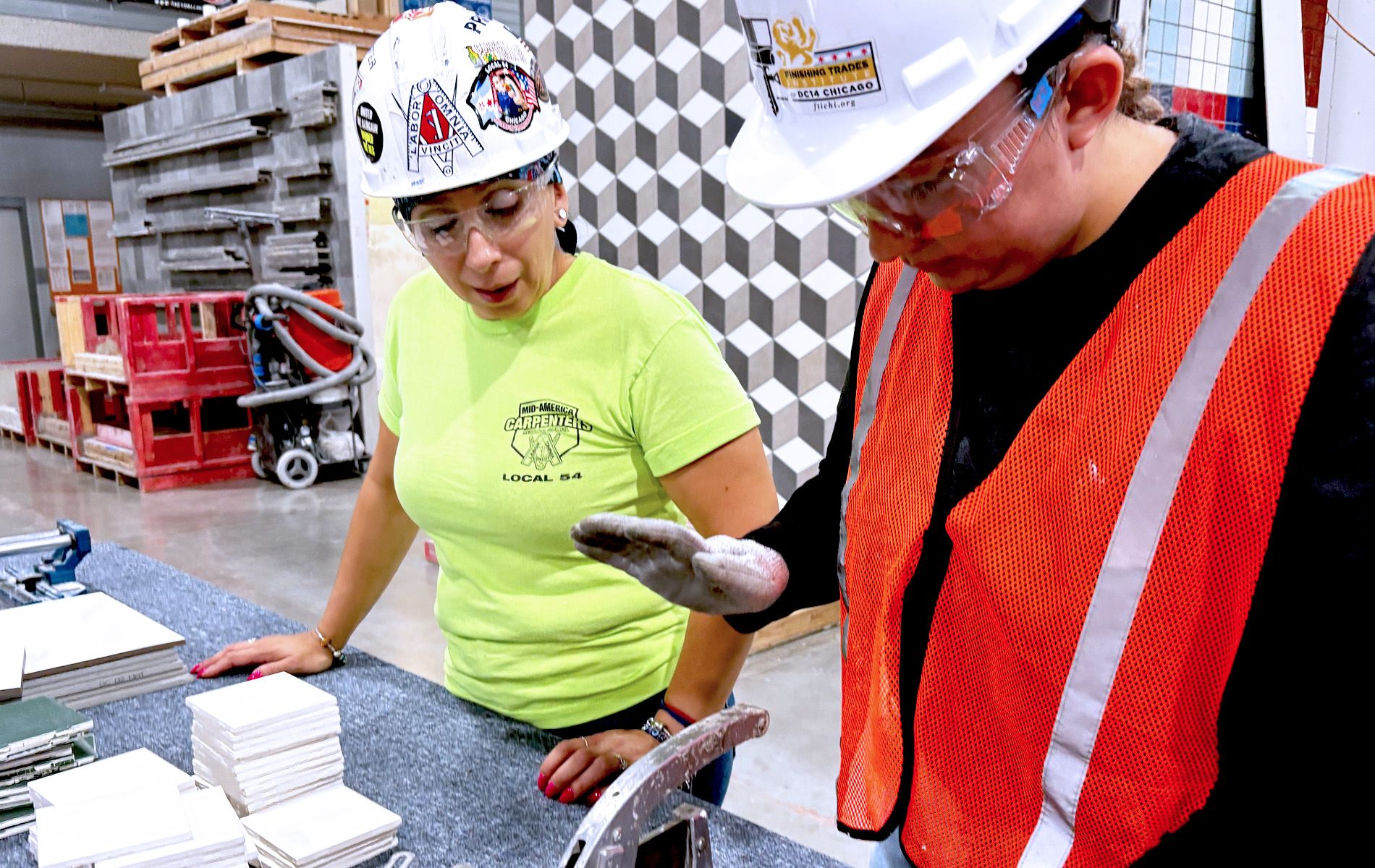
“I enjoy proving to myself and others that women can thrive in this trade.”
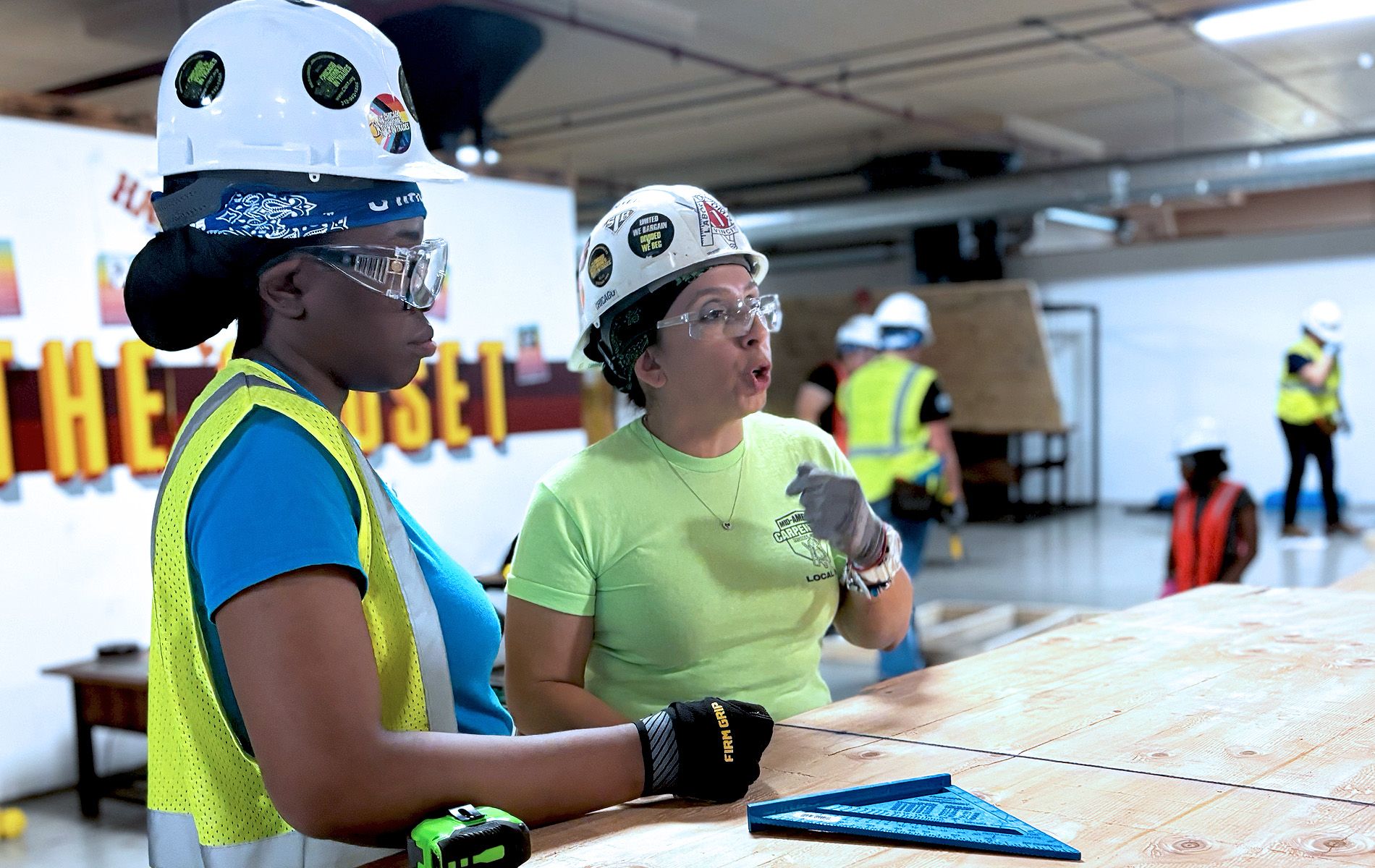
Edith provides guidance to students in the Women Build Illinois program.
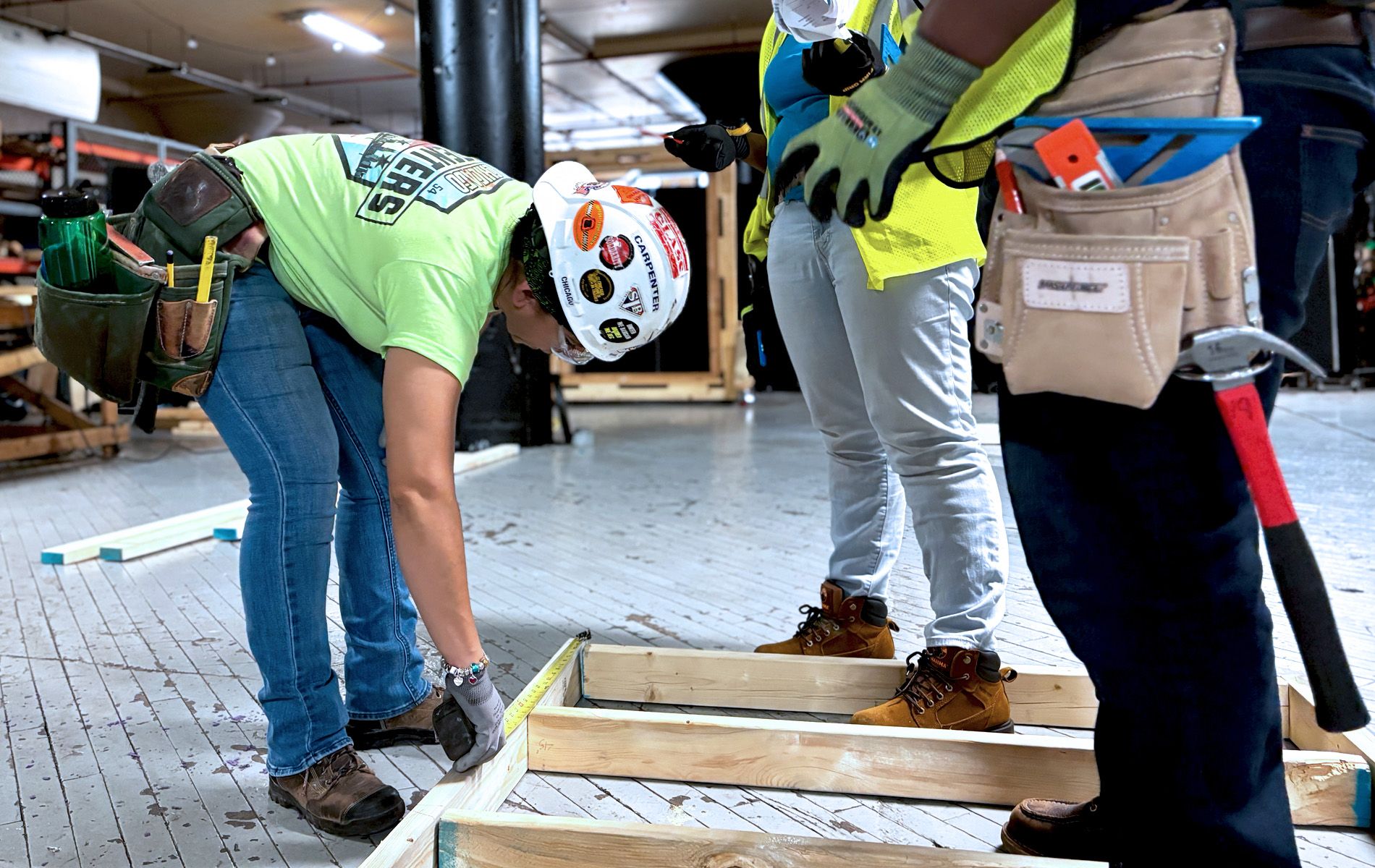
Edith checks the students’ work in the carpentry class.

“I always wanted to give back, and I have always been good at math. Eventually, I became an instructor myself, and I love it. Teaching feels like my passion now.”
- “I enjoy proving to myself and others that women can thrive in this trade.”
- Edith provides guidance to students in the Women Build Illinois program.
- Edith checks the students’ work in the carpentry class.
- “I always wanted to give back, and I have always been good at math. Eventually, I became an instructor myself, and I love it. Teaching feels like my passion now.”
Q: What about PPE (personal protective equipment) designed for women?
“That’s one of the biggest problems I faced, being the only woman in the field. They never had small harnesses, small gloves, or small hard hats. Everywhere you go, we face that, and I don’t think it’s fair. They’ll say, ‘We don’t have smalls,’ and I’m like, ‘Well, I need a small now.’ They’ll try not to give it to you, but I learned to say, ‘This is my right. You’re supposed to give me small gloves because if you give me large ones, that’s a hazard.’
I think we’re still fighting that battle—they don’t provide proper PPE for women. I learned to buy my own, which I don’t think was fair, but I had to be safe. Maybe now it’s changing because more women are getting into safety roles. When I see a woman, I know to ask, ‘Are you getting proper PPE? How are they treating you?’ Being in safety, I’m more aware.”
Q: What common safety mistakes do you see from newer tradespeople?
“When you’re in pre-apprenticeship or taking OSHA training, you learn the correct way to do things. But when you go out in the field, it’s a different ball game. You get paired with a journeyman who might do things wrong, and we all get complacent. We tend to do things the easier way or the fastest way, and it’s not necessarily the safest way.
I’m guilty of it too. I used to think, ‘It’ll take me five minutes to get a ladder to do this safely, let me just do it this way.’ Now that I’m in safety, I wonder, ‘What was I thinking?’ I tell students they have to be very conscious and that it’s okay to tell their foreman, ‘I don’t feel safe.’
The problem is that you can become complacent because you’ve done something a thousand times. I tell my students that they know the right way, and we need to start letting people know when something isn’t the correct way. The new generation has to implement this change.”
Q: Why is OSHA 10 training important for student success?
“OSHA 10 provides general safety information that many students don’t know. It teaches them about their rights as American workers, not just in construction, but in any working environment. We have a right to a safe workplace, and many people don’t know that if there’s a problem, they can report it to OSHA.
People hear OSHA and think it’s bad, but I tell them OSHA is actually our friend—it protects us. It’s important that students go to job sites with some knowledge of safety and what their rights are as American workers.
I teach the introduction to OSHA and worker rights, focusing on hazards with special attention to falls because they’re the number one cause of fatalities in construction. We cover electrocution, struck-by hazards, caught-in accidents, personal protective equipment, and health hazards in construction. I also like to teach ergonomics, fire protection, power tools, and bloodborne pathogens.”
Q: What role has CWIT played in your life as a tradeswoman?
“CWIT has been amazing to me. Not only did I become a tradeswoman, but they’ve also supported me in transitioning into safety as a professional. When I told CWIT I didn’t want to be a carpenter anymore and wanted to get into safety, they supported me 100%. In my heart, I will forever be a carpenter, but CWIT backed my career transition completely. If it wasn’t for CWIT, I would not be where I am today.
We need more women in safety because we know what other women need in the field. This is a great career, and it’s easy to get into safety, especially for women who have been in the trades. We’ve worked, we know the hazards. Just going to school, taking a few classes, and you can change careers. And CWIT will always have your back.”
